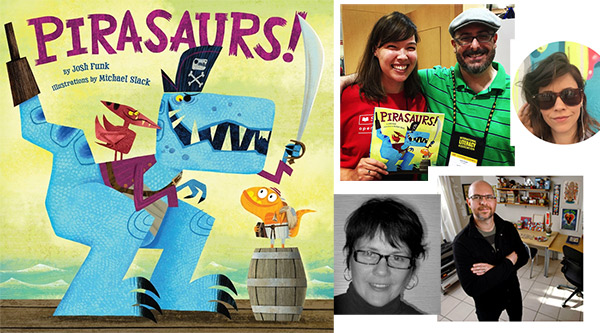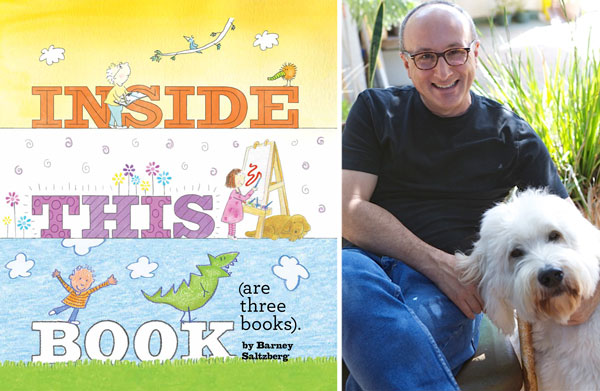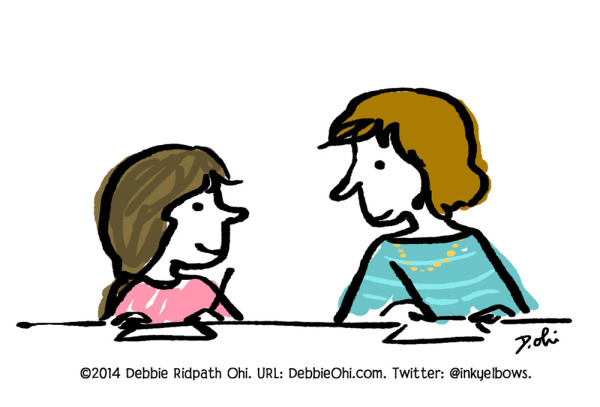UPDATE: To see sample illustrations, final covers, photo of me meeting Ms. Blume in person, see DebbieOhi.com/judyblume.
So in Part 1 of my Judy Blume news, I mentioned that I was thrilled to be illustrating the covers of the seven middle grade editions of classic Judy Blume novels that are being reissued by Simon & Schuster Children's.
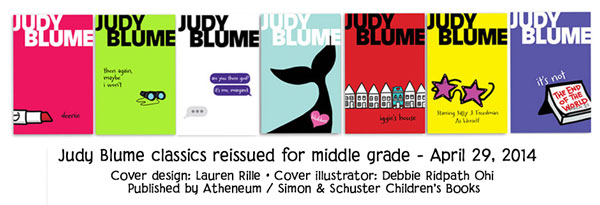
Well, that's not all.
Just got word that I can make this public: I am also excited to be illustrating the covers of three Judy Blume classics that are being reissued as chapter books AND PROVIDING THE INTERIOR ILLUSTRATIONS AS WELL.
These books are Freckle Juice, The One In the Middle Is The Green Kangaroo and The Pain And The Great One. (***Edit May 12, 2014: Hardcover editions come out June 3rd, paperbacks on May 27th, 2014***)
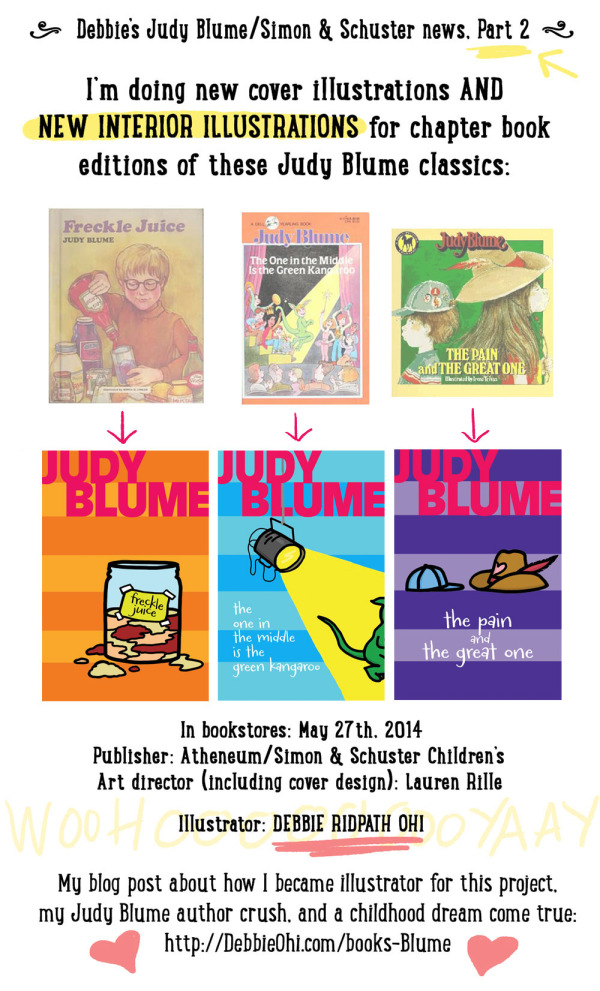
My history as a Judy Blume fangirl:
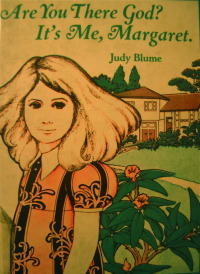 Like many others reading this, I'm a longtime fan of Judy Blume's work. Her books reassured my younger, angsty self that I wasn't the only one having all these bizarre thoughts and feelings and impulses. I was way too insecure and introverted to ever talk frankly about many of these topics with anyone. Books like Are You There God? It's Me, Margaret comforted me, helped me gain the confidence to ask questions, to not feel so much like a freak. Reading her books, it seemed as if Judy Blume knew me.
Like many others reading this, I'm a longtime fan of Judy Blume's work. Her books reassured my younger, angsty self that I wasn't the only one having all these bizarre thoughts and feelings and impulses. I was way too insecure and introverted to ever talk frankly about many of these topics with anyone. Books like Are You There God? It's Me, Margaret comforted me, helped me gain the confidence to ask questions, to not feel so much like a freak. Reading her books, it seemed as if Judy Blume knew me.
My sister helped introduce some of Judy Blume's work to me, like Deenie. Ruth read the book just before she was diagnosed with scoliosis herself, and told me later that Deenie's experiences with wearing a Milwaukee Brace were very similar to hers. "Except I didn't have a guy fall in love with me while I wore mine. :-)"
At the SCBWI Summer conference in 2011, Judy Blume was on the faculty and I was struck by her down-to-earth good humor and easygoing manner. I was too nervous to consider approaching her during the weekend, but as I was about to head off to the airport, I came across Richard Peck and Ms. Blume in front of the hotel. On impulse, I asked if they minded if I snapped a photo and they kindly agreed:
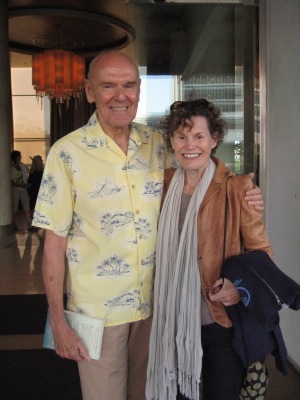
Fast-forward two and a half years later. LOOK what Judy Blume tweeted a few days ago:
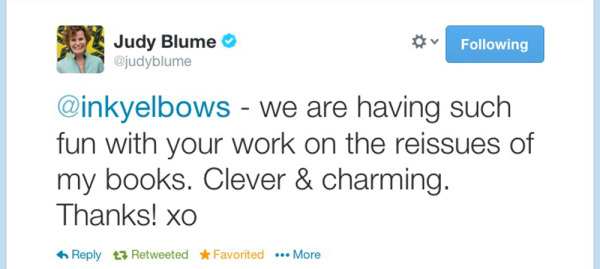
I have, of course, printed this tweet out and put it up in my office. I'm also going to print out and laminate a smaller version which I plan to carry around with me FOREVER, to remind myself that childhood dreams sometimes do come true.
How I became the illustrator of Judy Blume's revamped middle grade & chapter books:
 On Dec. 19, Justin Chanda (my editor at Simon & Schuster Books For Young Readers and also publisher) emailed to see if I was interested in auditioning for a book project "of great proportions" but that also had a very tight deadline. Intrigued, I said I was interested. Here is a transcript of the email exchange that followed...
On Dec. 19, Justin Chanda (my editor at Simon & Schuster Books For Young Readers and also publisher) emailed to see if I was interested in auditioning for a book project "of great proportions" but that also had a very tight deadline. Intrigued, I said I was interested. Here is a transcript of the email exchange that followed...
---- Transcript begins ------
9:07 pm, JUSTIN:
Did you perhaps read Judy Blume growing up?
9:08 pm, ME:
OMGOMGOMGOMGOMGHOMHOG
OMG
9:10 pm, JUSTIN:
Ok good. We'll talk tomorrow morning.
9:11 pm, ME:
OMGOMGOMGIMGOGGGGG
Very much looking forward to chatting tomorrow
OMGOMGOMGOMGOMG
---- Transcript ends ------
What I needed to do: come up with cover illustration sketch ideas for three of the books. Justin and I brainstormed and I also had notes from brainstorming sessions that took place at S&S Children's with Namrata Tripathi. Thanks also to some of my Torkidlit friends (whom I swore to secrecy) and a few others for helping me come up with some extra sketch ideas.
I had been warned that I may not get the job, so I knew that there was a good chance I'd be working through the holiday season and still get passed over, but I couldn't say no. I mean....JUDY BLUME!!!

Shortly after I began sketches, however, the Toronto ice storm hit and we lost power in our house. My friend, Cathy Rutland, came to the rescue and offered to let me stay at her apartment until our power came back on. Jeff (MY HERO) took a break from trying to keep our water pipes from freezing and moved my scanner, iMac, Wacom stuff and other hardware I needed over to Cathy's apartment.
Meanwhile, Justin and I were in constant touch. He and I were exchanging emails, sketches, feedback on sketches pretty much every day throughout the holidays except for Christmas Day and New Year's. [Correction: Justin reminded me that we actually did exchange email on New Year's as well. :-)]
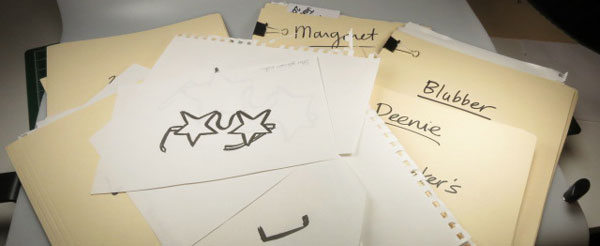
Because the books were coming out in April and they had not yet found the right illustrator, timing was tight. I estimate I drew over 150 sketches during that time and sent Justin 50 of those. When everyone else got back after the holidays, I continued the brainstorming and sketching process with Justin, Dan Potash, Namrata Tripathi and Lauren Rille.
 Side note: I've noticed some mistakenly think that I did the cover redesign. I want to emphasize that Lauren Rille did the wonderful new cover designs, not me. I just provided the illustrations.
Side note: I've noticed some mistakenly think that I did the cover redesign. I want to emphasize that Lauren Rille did the wonderful new cover designs, not me. I just provided the illustrations.
Up to this point, I had mainly been focusing on hand-drawn sketches that I scanned into Photoshop, but Dan Potash asked if I could redraw some of their favorites into vector-line style. This wasn't my usual illustration style but I love creative challenges. :-)
Finally we came up with some cover samples that were good enough to send to Judy Blume, and then I waited to hear if she liked them or not. This is when I posted the following on Facebook:
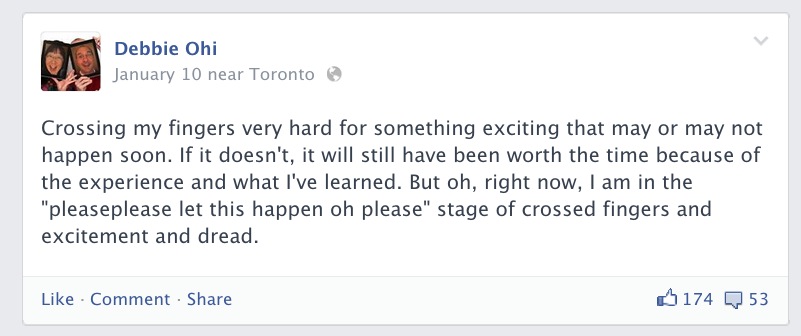
The waiting was AGONY. I was such an airhead at home, forgetting where I put things, only half paying attention to what was going on around me. I burned meals. I also put dish soap in the rinse agent compartment of our dishwasher....there were suds everywhere! Jeff was incredibly patient. :-)
Justin called me on January 16th, 2014. I remember noticing the 212 area code and immediately thinking newyorknewyorkohpleaseohplease and then picking up the phone and JUSTIN TOLD ME THAT JUDY BLUME LOVED THE COVERS YAAAAAAAAY *AND* that they wanted me to also do the interior illustrations for the three chapter books. (!!!!)

I freaked out. I became aware I had started screaming at Justin, tried to calm down and be professional, but then started screaming again. At one point, he had to reassure me that "Yes, this is really happening." After the call, I immediately called Jeff at work and screamed at him and then I emailed my sister and my agent at Curtis Brown, Ginger Knowlton (by that point my throat was sore from all that screaming :-)).
Some of you may have seen my "Blooming" found object doodle recently:
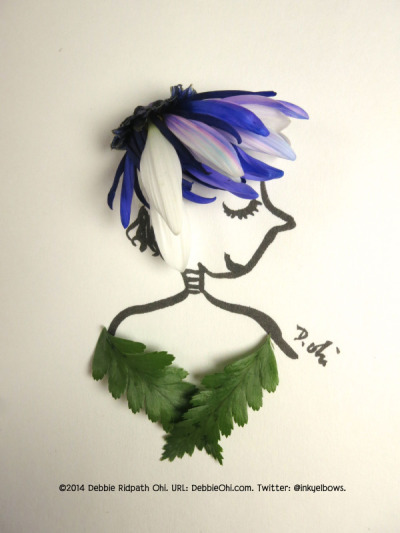
The material came from a congratulatory bouquet of flowers from my friend Cathy, who said they were blooms for my Blume news. :-)
And this brings me to why I can't attend SCBWI-NYC this coming week:
Because the chapter books are coming out in May, the deadline is tight. Cover details are still being tweaked. And I've been madly working on the b&w interior illustrations, which need to be finished in the next couple of weeks. I'm using a much looser illustration style for the interiors; I'll post samples when I can.
I had to cancel my trip to NYC and the SCBWI Winter Conference and have been working through weekends and many evenings, turning down social invites. Jeff treks down to my basement office every once in a while to check on how I'm doing. He and I have been getting takeout a lot lately.
But every so often I'll force myself to press pause, sit back and appreciate the moment. I AM ILLUSTRATING BOOKS BY JUDY BLUME.
JUDY BLUME.
My husband has gotten used to me sending him random texts during the day consisting of just the following:

Early in the process, Lauren Rille and I were chatting about being Judy Blume fangirls, and how absolutely COOL it was we got to read and reread Judy Blume books and say it was part of work.
One thing I noticed as I was rereading her books: Judy Blume books are as relevant and inspiring now as they were years ago, dealing with universal issues and feelings while growing up. At the L.A. Times Festival Of Books, Judy Blume had advice for grown-up fans of her work who want to introduce their children to her books.
"First, invest in one with a new cover," she says. "Even if you like the old, original covers. Second, don't give it to them. Just leave the books strategically placed around the house and then occasionally say: 'Oh no, you're not reading that -- you're not ready for it yet.' " Heh.
You can find out more about Judy Blume and her work at JudyBlume.com, including tips for aspiring writers.
Meanwhile, I'd better get back to work. THANK YOU for all the kind words, congratulatory messages and encouragement. They are so much appreciated.





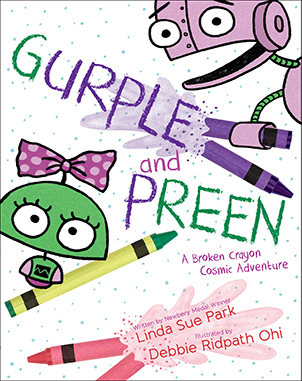
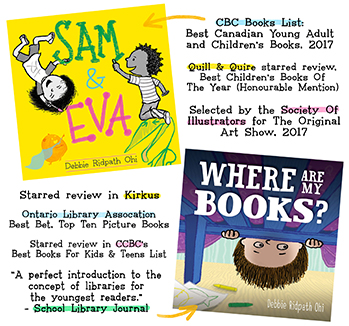





 Tuesday, January 26, 2021 at 11:07 AM
Tuesday, January 26, 2021 at 11:07 AM










